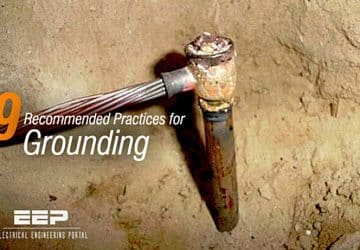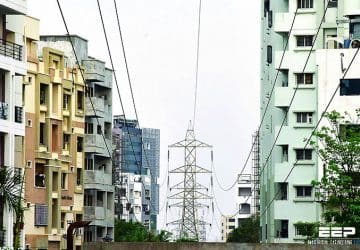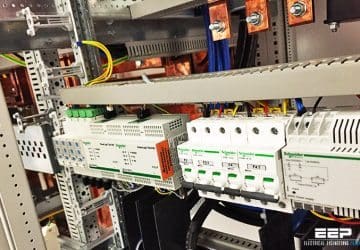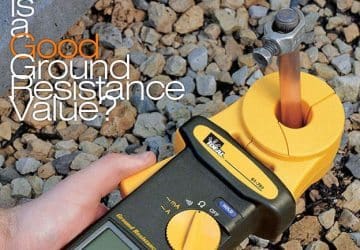6 Voltages a Person Can Be Exposed To In a Substation
Figures 1 and 2 show the voltages a person can be exposed to in a substation. There are many definitions related to these voltages, but the following six are the most important. These definitions are: Ground potential rise (GPR) Mesh… Read more
Oct 09, 2015 | By Edvard Csanyi

10 Common Causes Of Arc-Flash and Other Electrical Accidents
The most common cause of Arc Flash and other electrical accidents is carelessness. No matter how well a person may be trained, distractions, weariness, pressure to restore power, or overconfidence can cause an electrical worker to bypass safety procedures, work… Read more
Aug 10, 2015 | By Edvard Csanyi

Nine Recommended Practices for Grounding
Grounding and bonding are the basis upon which safety and power quality are built. The grounding system provides a low-impedance path for fault current and limits the voltage rise on the normally non-current-carrying metallic components of the electrical distribution system…. Read more
Mar 06, 2015 | By Edvard Csanyi

10 Important Precautions When Working On Low Voltage Energized Equipment
For most work, the electrical equipment must be de-energized because there is a high risk of injury to workers if they work on energized equipment. It may be possible to schedule such work outside of normal work hours to limit the inconvenience. Sometimes… Read more
Jul 18, 2014 | By Edvard Csanyi

How dangerous are induced currents in transmission towers and poles?
Landowners and developers should be aware of the potential for nuisance and startle shocks (caused by induced voltage) that can occur when someone comes in contact with a large conductive object (eg. a vehicle, building or even fencing) located on or off… Read more
Jun 27, 2014 | By Edvard Csanyi

Arriving at the scene of a substation fire. What should you do first?
Power substations contain transformers, large quantities of oil, energized electrical equipment and, in some cases, cylinders of compressed gas. Some of the oil may contain polychlorinated biphenyls (PCBs). On arriving at a substation fire, normally you should first call for firefighters… Read more
Jun 23, 2014 | By Edvard Csanyi

It can happen to experienced engineers too. Stay carefull.
The effect of electricity on the body depends on the amount of current and the length of time the body is exposed to it. The higher the current, the less time a human can survive the exposure. The path of… Read more
Jun 02, 2014 | By Edvard Csanyi

Arriving at the scene of a pole fire. What to do?
Utility pole fires are common and should be treated with great respect by firefighters. Pole fires are normally caused by the failure of insulators, switches, catastrophic failure of transformers or oil-filled switching equipment. Some poles used in the utility industry… Read more
May 21, 2014 | By Edvard Csanyi

Erection of earthing arrangements (TNC, TN-S, TNC-S, TT)
The earthing arrangements (TNC, TN-S, TNC-S, TT) of low voltage networks is largely determined by the Low Voltage Supplies. However, if the incoming supplies are at 11kV and the transformers are in the ownership of the user, the LV supplies… Read more
Apr 07, 2014 | By Edvard Csanyi

6 Simple Rules to Ensure Substation Safety
Another extremely important substation engineering aspect is associated with safety protection. It is fair to say that safety is always a No. 1 priority in substation design, operation and maintenance. Unlike the case where a higher reliability required a larger… Read more
Jan 27, 2014 | By Edvard Csanyi

4 General Safety Practices To Remember ALWAYS!
In addition to the safety precautions (access to HV enclosures and work on HV electrical equipment) the following general safety practices should be ALWAYS observed for work on electrical equipment. The scope of work and relevant circuit should be checked… Read more
Oct 09, 2013 | By Edvard Csanyi

What Is a Good Ground Resistance Value?
The goal in ground resistance (or earth resistance) is to achieve the lowest ground resistance value possible, that makes sense economically and physically, when contacting the earth, also known as the soil/ground rod interface. Ideally, a ground should be zero… Read more
Oct 02, 2013 | By Edvard Csanyi

How Do We Define Hazardous Areas?
The first requirement is to know what a hazardous area is. The principal factors relevant to the classifications of a hazardous area are the nature of the gases or dust present in the potentially explosive atmosphere and the likelihood of… Read more
Feb 09, 2013 | By Edvard Csanyi

How to manipulate energized conductors with hot stick
Hot sticks are poles made of an insulating material. They have tools and/or fittings on the ends which allow workers to manipulate energized conductors and equipment from a safe distance. Hot sticks vary in length depending on the voltage level… Read more
Jan 28, 2013 | By Edvard Csanyi

7 Golden Safety Rules for Working In HV Laboratory
Employees performing operations and testing work in high voltage laboratory are exposed to a greater hazard than most other employees. Safety rules MUST NOT be seen as a means of limiting our freedom, but should rather be looked upon as valuable… Read more
Dec 26, 2012 | By Edvard Csanyi


